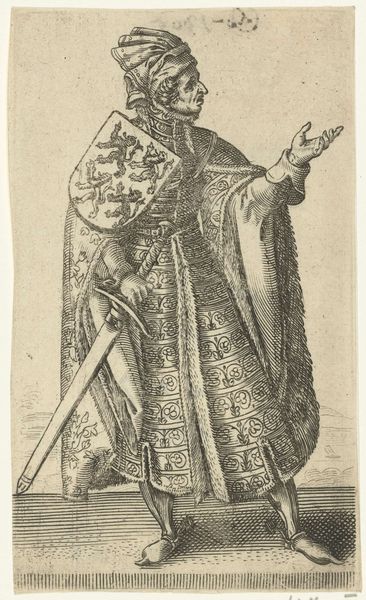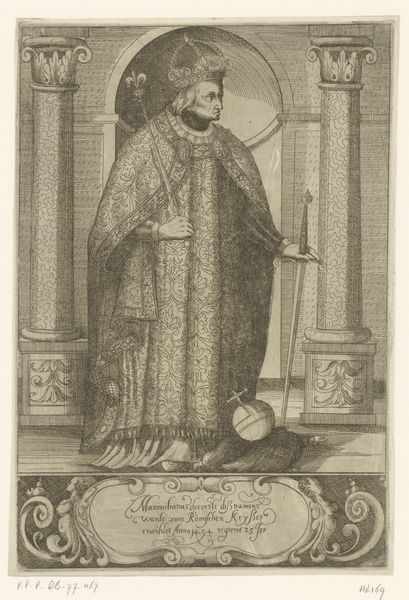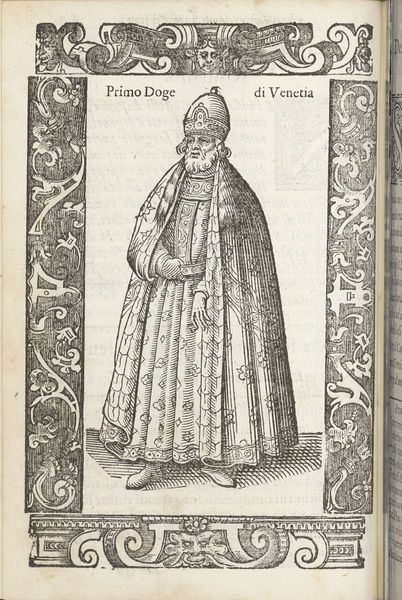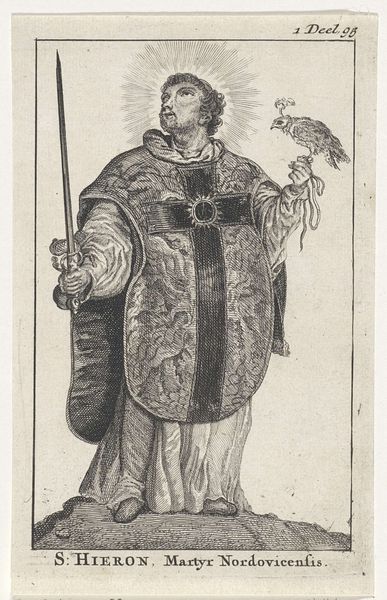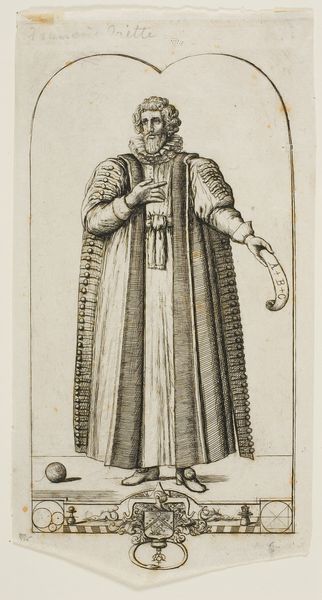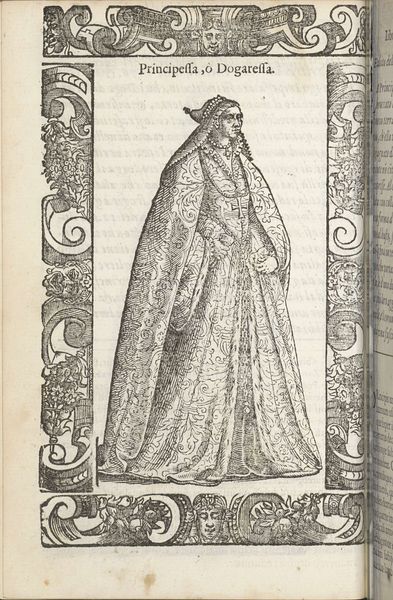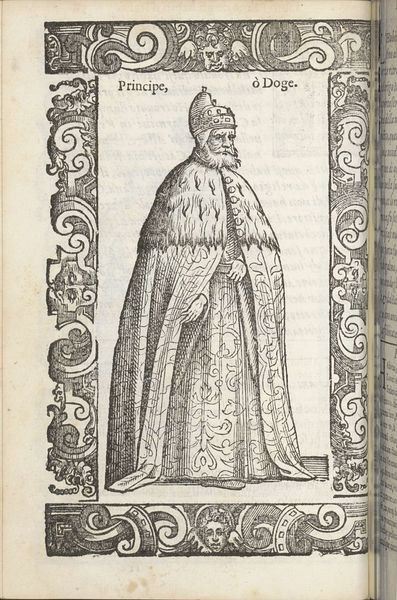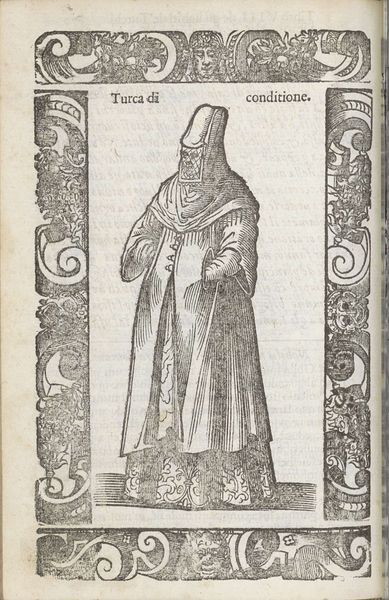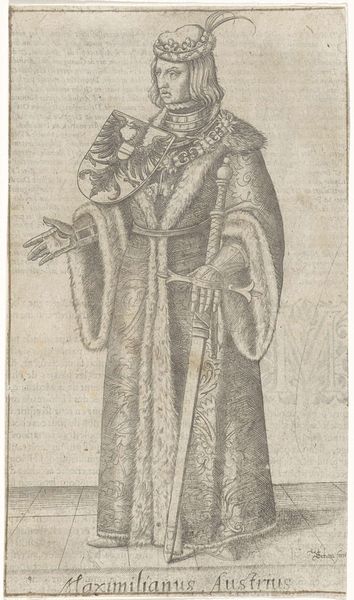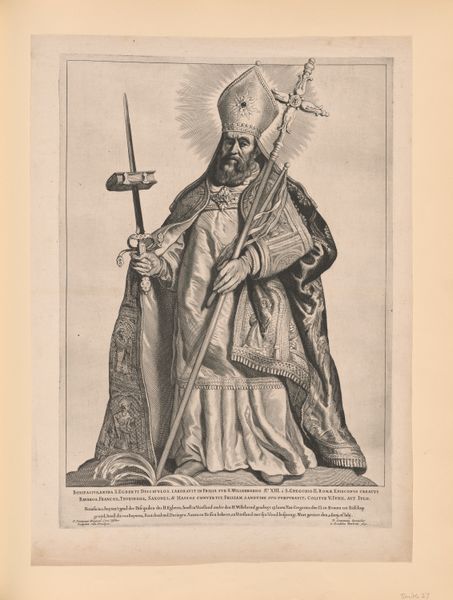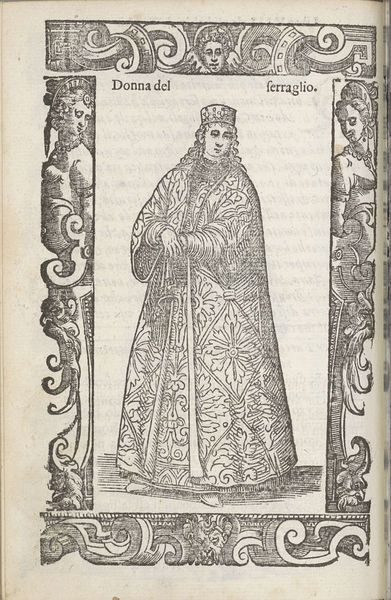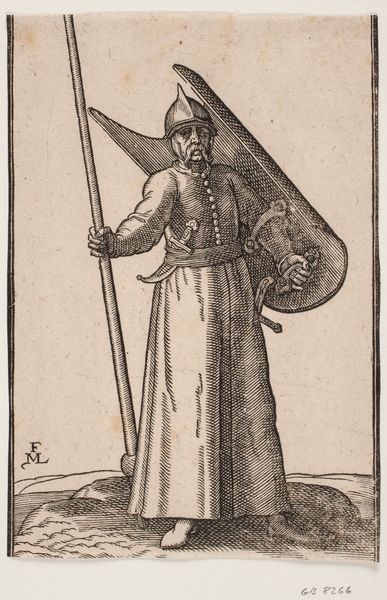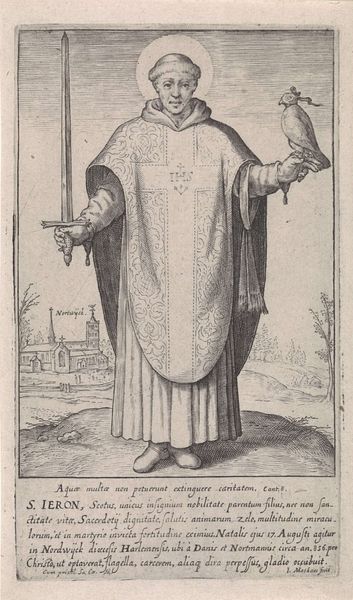
Mary, Queen of Scots (from "Teatro Belgico, overo ritratti historici, chronologici, politici, e geografici, délie sette provincie unité," volume I, page 412) 1690
0:00
0:00
drawing, print, engraving
#
portrait
#
drawing
#
baroque
# print
#
history-painting
#
engraving
Dimensions: Sheet (trimmed): 7 1/2 × 4 1/2 in. (19 × 11.5 cm)
Copyright: Public Domain
Curator: Here we have a rather fascinating engraving of Mary, Queen of Scots, dating back to 1690. It’s from Gregorio Leti’s “Teatro Belgico” and is currently housed at the Metropolitan Museum of Art. Editor: My first thought is of stark regality—and tragedy. The crisp, precise lines of the engraving render her garments with elaborate detail, but somehow amplify a feeling of somber isolation. Curator: Absolutely. Consider the symbolic weight of her attributes. She clutches a crucifix, fingers wrapped around its smooth surface—a blatant declaration of faith, resilience, and ultimately, martyrdom in the face of religious conflict. And she holds a rosary dangling at her waist. These images are potent cultural and personal reminders. Editor: Looking closely at the lines though, I wonder about the actual making of this print. The detail suggests a real dedication on the part of the engraver, a craftsperson working meticulously, transferring an image from somewhere else – was it a painting, perhaps? – onto this plate to create reproducible images of power. Curator: The purpose here is the dissemination of image—memory and allegiance constructed through repeated impressions of iconic leaders like Mary, Queen of Scots. Consider how such representations bolster or challenge existing power structures and the construction of the royal martyr and how such narratives continue to inform the visual image. Editor: It’s so interesting to see those intentions come alive through the material object, though. Engraving wasn't quick or cheap. It meant someone made a real, economic commitment to disseminate that story you describe, which really amplifies the underlying ideologies present within this piece. Curator: I completely agree. Seeing Mary through this visual echo, filtered across the centuries, gives her tragedy renewed resonance. I see this engraving and immediately think of religious wars and cultural clashes of those ages. It serves as an ever lasting cultural and historic memory of the events that transpired. Editor: And I’m thinking about how that resonance persists because of the engraver's skill, and the publisher's investment—the physical labor interwoven with political agendas of that era. We both end up circling back to image of cultural significance.
Comments
No comments
Be the first to comment and join the conversation on the ultimate creative platform.

